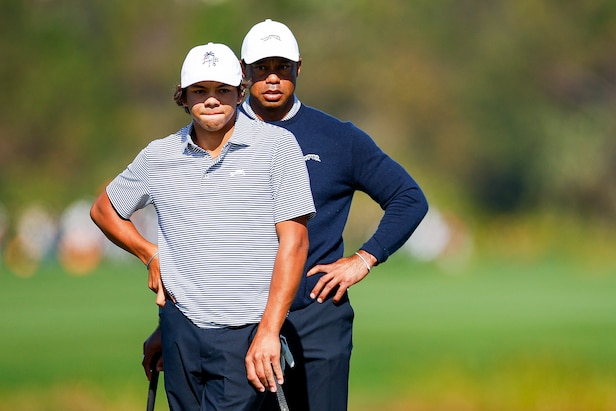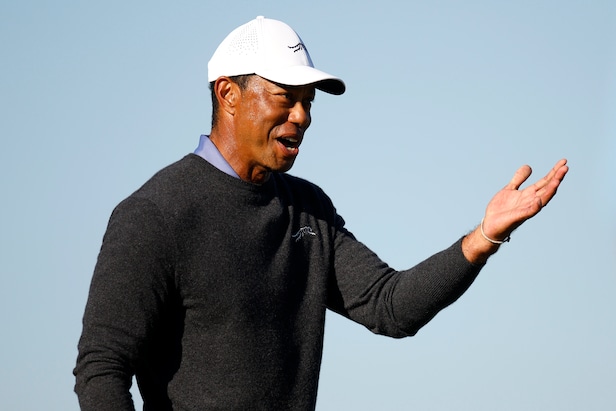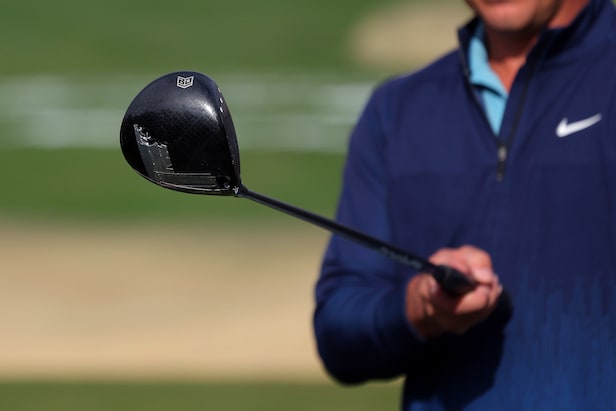Inside Peter Oosterhuis’ battle with early-onset Alzheimer’s, and how he vowed to keep swinging – Australian Golf Digest

- by Admin
- May 2, 2024
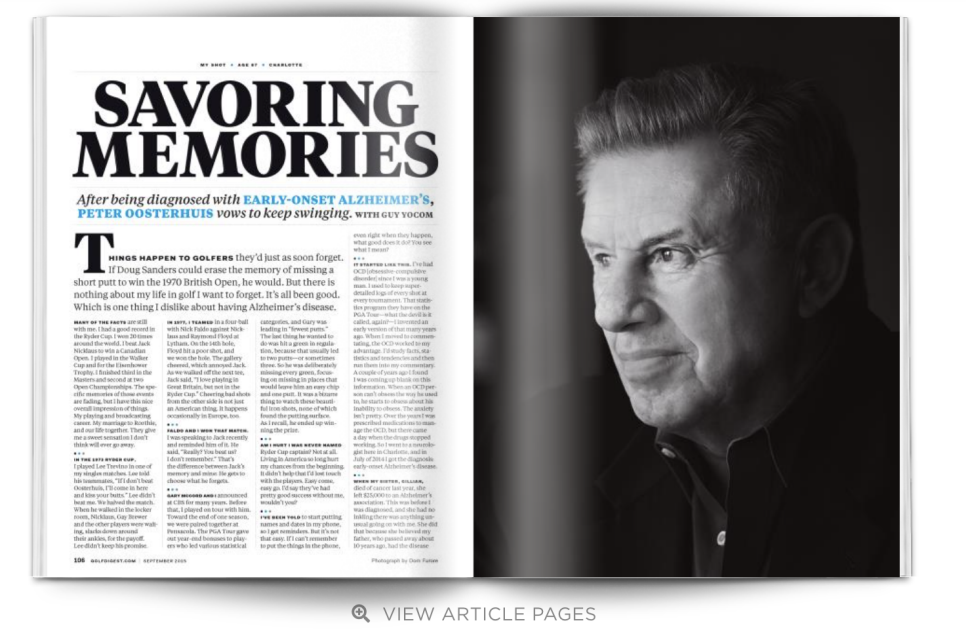
Editor’s note: Peter Oosterhuis, celebrated player and broadcaster, died at 75 on May 2, 2024. The following is a look back at his incredible career and documented health struggles from Golf Digest’s September 2015 issue.
Things happen to golfers they’d just as soon forget. If Doug Sanders could erase the memory of missing a short putt to win the 1970 British Open, he would. But there is nothing about my life in golf I want to forget. It’s all been good. Which is one thing I dislike about having Alzheimer’s disease.
Many of the facts are still with me. I had a good record in the Ryder Cup. I won 20 times around the world. I beat Jack Nicklaus to win a Canadian Open. I played in the Walker Cup and for the Eisenhower Trophy. I finished third in the Masters and second at two Open Championships. The specific memories of those events are fading, but I have this nice overall impression of things. My playing and broadcasting career. My marriage to Roothie, and our life together. They give me a sweet sensation I don’t think will ever go away.
● ● ●
In the 1973 Ryder Cup, I played Lee Trevino in one of my singles matches. Lee told his teammates, “If I don’t beat Oosterhuis, I’ll come in here and kiss your butts.” Lee didn’t beat me. We halved the match. When he walked in the locker room, Nicklaus, Gay Brewer and the other players were waiting, slacks down around their ankles, for the payoff. Lee didn’t keep his promise.
● ● ●
In 1977, I teamed in a four-ball with Nick Faldo against Nicklaus and Raymond Floyd at Lytham. On the 14th hole, Floyd hit a poor shot, and we won the hole. The gallery cheered, which annoyed Jack. As we walked off the next tee, Jack said, “I love playing in Great Britain, but not in the Ryder Cup.” Cheering bad shots from the other side is not just an American thing. It happens occasionally in Europe, too.
● ● ●
Faldo and I won that match. I was speaking to Jack recently and reminded him of it. He said, “Really? You beat us? I don’t remember.” That’s the difference between Jack’s memory and mine: He gets to choose what he forgets.
(Golf Digest+ members get access to the complete Golf Digest archive dating back to 1950. Sign up here.)
Gary McCord and I announced at CBS for many years. Before that, I played on tour with him. Toward the end of one season, we were paired together at Pensacola. The PGA Tour gave out year-end bonuses to players who led various statistical categories, and Gary was leading in “fewest putts.”
The last thing he wanted to do was hit a green in regulation because that usually led to two putts—or sometimes three. So he was deliberately missing every green, focusing on missing in places that would leave him an easy chip and one putt. It was a bizarre thing to watch these beautiful iron shots, none of which found the putting surface. As I recall, he ended up winning the prize.
● ● ●
Am I hurt I was never named Ryder Cup captain? Not at all. Living in America so long hurt my chances from the beginning. It didn’t help that I’d lost touch with the players. Easy come, easy go. I’d say they’ve had pretty good success without me, wouldn’t you?
● ● ●
I’ve been told to start putting names and dates in my phone, so I get reminders. But it’s not that easy. If I can’t remember to put the things in the phone, even right when they happen, what good does it do? You see what I mean?
● ● ●
It started like this. I’ve had OCD [obsessive-compulsive disorder] since I was a young man. I used to keep super-detailed logs of every shot at every tournament. That statistics program they have on the PGA Tour—what the devil is it called, again?—I invented an early version of that many years ago. When I moved to commentating, the OCD worked to my advantage. I’d study facts, statistics and tendencies and then run them into my commentary. A couple of years ago I found I was coming up blank on this information. When an OCD person can’t obsess the way he used to, he starts to obsess about his inability to obsess. The anxiety isn’t pretty. Over the years I was prescribed medications to manage the OCD, but there came a day when the drugs stopped working. So I went to a neurologist here in Charlotte, and in July of 2014 I got the diagnosis: early-onset Alzheimer’s disease.
● ● ●
When my sister, Gillian, died of cancer last year, she left $25,000 to an Alzheimer’s association. This was before I was diagnosed, and she had no inkling there was anything unusual going on with me. She did that because she believed my father, who passed away about 10 years ago, had the disease even though he was never diagnosed. He gradually withdrew from the world. She cared after him for a long time, and it was quite terrible for her.
● ● ●
Shotlink! The name of that PGA Tour statistics program. It just came to me.
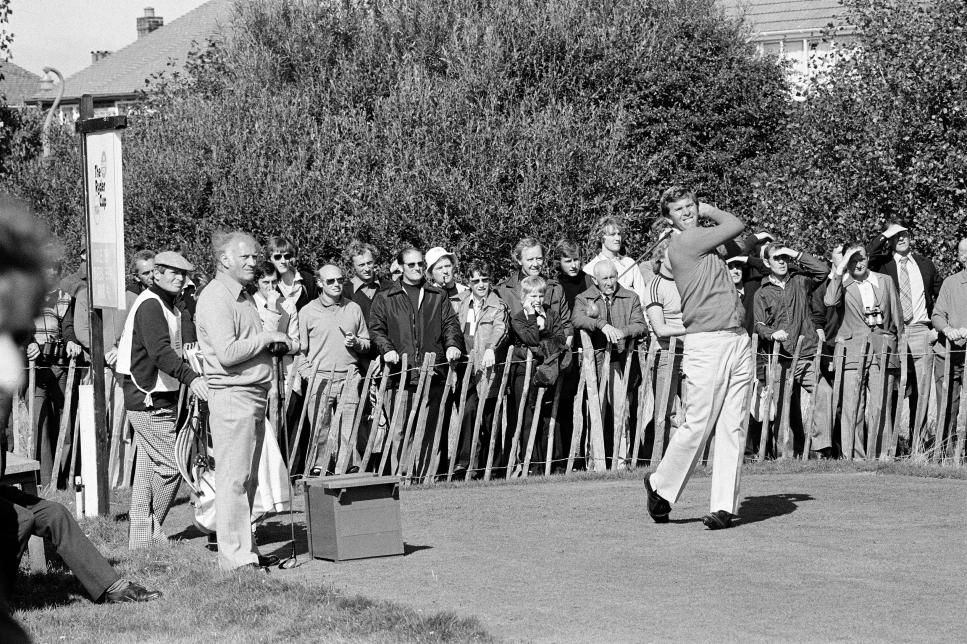
Peter Dazeley
Golfers as a group have extraordinary memories. There was a time when I could recall every course I’d ever played in fine detail, not just pars for the holes but yardages. Like a lot of golfers, I could tell you what I shot, where I finished in the tournament. I wasn’t an encyclopedia, but I was close. Now it just isn’t there. I remember things like Gary Player winning the Open Championship in 1974, which has left an impression because I finished second. But it’s quite random. It’s all falling away.
● ● ●
My earliest memory is of a toy train set my parents gave me when I was perhaps 5 years old. I grew up on the third floor of my parents’ building in southeast London. There was a train that ran by, perhaps 200 yards away, and I could glimpse it out my window. I so wanted to be a train engineer. The toy train was a big deal, expensive for the time. It was more than 60 years ago, and I can picture it clear as day. It’s strange what your mind holds on to.
● ● ●
The playing for the 1968 Eisenhower Trophy was at Royal Melbourne. I was 20 years old and so proud to represent Great Britain. The American team showed up with these shiny new bags and brilliant clothing, as if they were professionals. Meanwhile, our team–Michael Bonallack, Gordon Cosh, Ronnie Shade and myself–had these ordinary carry bags. The Americans always had the best of everything. We finished second to the Americans in that Eisenhower Trophy. No excuses–your clubs don’t know the kind of bag they’re sitting in.
I made two holes-in-one at PGA Championships. One of them was at the long par-3 eighth hole at Southern Hills in 1982. After the ball went in, I glanced over at a couple of PGA officials and noticed they were avoiding eye contact. I thought it odd that they were looking down at their shoes. But a month later I ran into one of these officials. He told me the PGA had planned to give a huge prize—I recall it was a million dollars—for a hole-in-one there. Just before the tournament started, the prize arrangement fell through. “I tried to look at you,” he said, “but all I saw was a million dollars going out the window.”
● ● ●
The week of the Masters, there always was a Wednesday meeting attended by the CBS staff and Augusta National officials, to sort of go over things. At one of my first Masters working for CBS, as the meeting was about to wrap, an official said, “Do any of you have any questions?” I raised my hand and asked, “What is the speed of the greens?” Everyone knew they were the fastest greens we saw all year, and everyone wanted to know what they read on the Stimpmeter. One of the officials said in a very measured voice, “Tournament speed.” He cocked an eyebrow to indicate there would be no more discussion. We still don’t know for certain what they Stimp at during the tournament.
● ● ●
CBS had a dinner for the announcers at the [1996] PGA Championship won by Mark Brooks. The wives were not invited, which we were unaware of. Roothie and a couple of the other wives had their hair done and were looking like a million bucks. When we arrived, they were politely rebuffed. When I got back to the hotel room, Roothie said, “Sorry, but you’re not invited.” Why she got angry with me and not CBS, I’m still not sure, but she kicked me out. I spent the night with David Feherty.
● ● ●
I was the head pro at Riviera for a few years up to 1994. O.J. Simpson was a member there, and I recall him as one of the most-liked guys in the club. After I moved on, I stayed in touch with many of the members. They told me that after O.J. left the club, his name somehow stayed on the handicap sheet. The guys at the club, who love a good joke, started posting scores for O.J. His handicap dropped five shots while he was behind bars. I miss the people at Riviera.
● ● ●
My phone at Riviera rang before the 1992 L.A. Open, which of course is played at Riviera. It was Jay Brunza, Tiger Woods’ sport psychologist, wanting to know if it would be OK if Tiger came up and played a practice round. Tiger was 16, the reigning U.S. Junior Amateur champion, and had a sponsor’s exemption. I invited them up, and we played together: Jay, Tiger and myself. My first impression was, This kid is focused. He was polite but talked very little. He studied the green complexes intensely, hit drives to different parts of the fairways. It was exactly the way an experienced pro prepares for a tournament. He hit the ball a mile, he hit it high, and he knew what he was doing. He was the most confident 16-year-old I’d ever seen.
● ● ●

From left: Kelly Tilghman, Mark Lye, Frank Nobilo and Peter Oosterhuis of the Golf Channel during the first round of the Merrill Lynch Shootout in 2006.
Michael Cohen
I’ll tell you why I left the job at Riviera. I met Roothie, who was a member, and we fell in love and got married. There is nothing clubs dislike more than the idea of romance between the pro and a member, so I fell into disfavor with some of the more staunch people in charge there. Also, the owners developed an entirely different vision for the club. So in 1993, after briefly working for a golf club in England, I went to work broadcasting for Sky Sports.
Life takes so many interesting turns. In 1995, I got a call from this new network called the Golf Channel. Their offer: commentate at 28 tournaments.
I tossed the idea at Roothie, and she said, “We’ve been married for two years, and I have no desire to be at home alone for 28 weeks a year. Tell them you’ll take it—if they’ll pay for me to travel with you.” Surprisingly to me, Golf Channel accepted.
● ● ●
The secret is to do for a living something that, given a choice, you’d do anyway. I never saw announcing as work. Hanging out at places like Augusta National and Pebble Beach, being with my friends, the preparation, is not exactly a crime against humanity.
● ● ●
Rory or Jordan? Long term, I’ll take Rory. He’s much longer than Jordan. With length comes the ability to destroy courses. Rory’s distance notwithstanding, they seem to be about equal. Who comes after them? It’s a 20-way tie for third place.
● ● ●
The best British player you don’t know much about? Brian Barnes. He was a character, a big guy who smoked a pipe and frequently hit shots with the pipe still in his mouth. Brian hit the ball very long and straight. Other parts of his game and a fast lifestyle held him back, but he’s a great example of a player who would have benefited from modern equipment. Brian in his prime would have destroyed courses the way Rory and Dustin Johnson destroy them. But Brian is 70 now, I believe, and as they say in America, it is what it is.
● ● ●
More From Golf Digest  Tribute Peter Oosterhuis, noted player and broadcaster, dies at 75
Tribute Peter Oosterhuis, noted player and broadcaster, dies at 75 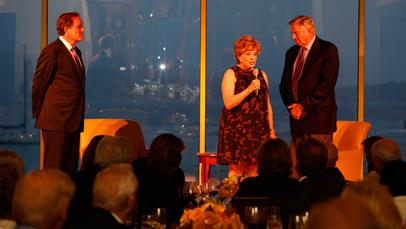 News Living Day By Day
News Living Day By Day
The best hobby for a golfer: bird-watching. Golf courses are a giant aviary. As I traveled the world, I carried my trusted copy of National Geographic Complete Birds of the World. I cataloged every bird I recognized. The scissor-tailed flycatcher: check. The dark-eyed junco: check. The list is at roughly 500 and growing—I hope.
My first win as a pro came in 1970 at Wedgewood Park in South Africa. I was paired with Gary Player and held a one-stroke lead late in the round. We came to a par 3 and both hit safely on, Gary a little farther from the hole. He hit his putt and missed. “Can you believe the amount of break on that putt?” he said. “I didn’t see that. Incredible!” I immediately dismissed what he said—it didn’t break that much—holed my putt and went on to win. Call it gamesmanship or whatever you like, but I’ve always thought it was a case of Gary trying to mess with a kid.
● ● ●
Shortly after I was diagnosed, I got a call from Jim Nantz. His first words were, “This can’t be true.” Jim’s father passed after a long battle with Alzheimer’s, and Jim founded the Nantz National Alzheimer Center in Houston. I’ve always felt close to Jim—18 years doing TV together created a close relationship—but he took it another step. He could sense that Roothie and I were completely lost, confused and a little scared. He told me some things that were so caring and compassionate. Then he immediately arranged for us to travel to Houston and get checked out more thoroughly. I’m now in a clinical trial for a drug that shows promise. When you have friends like Jim, you feel there’s always hope.
● ● ●
We’re still a little lost. I have to admit it. The news is still fresh, really. But we have our bearings enough to know that we want to help fight this disease. We’re not sure yet how we’re going to do it. Charity tournaments, perhaps, or a foundation, or maybe try to help Jim Nantz with what he’s doing. But we’ll find something. Golf can be a very powerful force for good.
● ● ●
Roothie says I never get angry. She thinks I’m fairly stoic. Maybe that comes from being raised in England by strong parents. My mother saw the effects World War II had on England, and my father escaped from Holland during the Nazi occupation and came to England, where he met my mother. We Brits tend not to get overly hysterical in times of crisis.
● ● ●
I’m human, though. Last week, a call came to our apartment for Roothie while she was out. The message was fairly important. When she got home, I couldn’t recall what the message was, or even who called. I sat there racking my brain without success, and after a while I broke into tears. Tears of frustration. It’s hard for the average person to understand how forgetting a simple phone message could make one so emotional.
● ● ●
The course near my boyhood home, Dulwich and Sydenham Hill, had these enormous blackberry bushes around its perimeter. When I was 12, I was permitted on the course to pick the blackberries to take home to my family. Soon the joke got around that the Oosterhuis boy was eating more blackberries than he was taking home. They allowed me to play the course. I played all day, every day. Two years later, I was scratch. Soon I was playing for my school team, and then the bigger amateur events. At 20 I turned pro, and in 1971 I won my first of four straight Orders of Merit.
● ● ●
The European PGA Tour began at about the same time I turned pro, in 1970. It was organized enough, but not to the point where we felt really cohesive. I played six straight Ryder Cups [1971 to 1981], and every time it was like walking into a dark room. We lost every one of them.
● ● ●
We were having a late breakfast at a French Open some years ago. In comes David Feherty with Sam Torrance. It was 10 a.m., and they were just getting in from wherever they’d been the night before. Their tee time was fast approaching, and they looked awful. They made their times—don’t ask me what they shot—but they deserved a medal for even finishing.
● ● ●
In golf, you never know what tomorrow might bring. We learn never to get discouraged when we shoot a high score, because tomorrow we might find something and shoot lights out. It happens all the time. A cure for Alzheimer’s could come down very soon. So I promise to just keep swinging.
This article was originally published on golfdigest.com
The Latest News
-
December 23, 2024Kyrgios return ‘super exciting’ for Australian tennis says Alex de Minaur
-
December 23, 2024‘Got some good bants’: Hilarious stump mic warning as Konstas plots secret Bumrah counter
-
December 23, 2024Former AFL player Aaron Shattock fighting for life after excavator accident
-
December 23, 2024Naomi Osaka questions Nike in statement regarding Australian Open outfits
-
December 23, 2024Aussie NFL Wrap-up: How did Jordan Mailata, Tory Taylor, and more perform in Week 16? | Sporting News Australia


